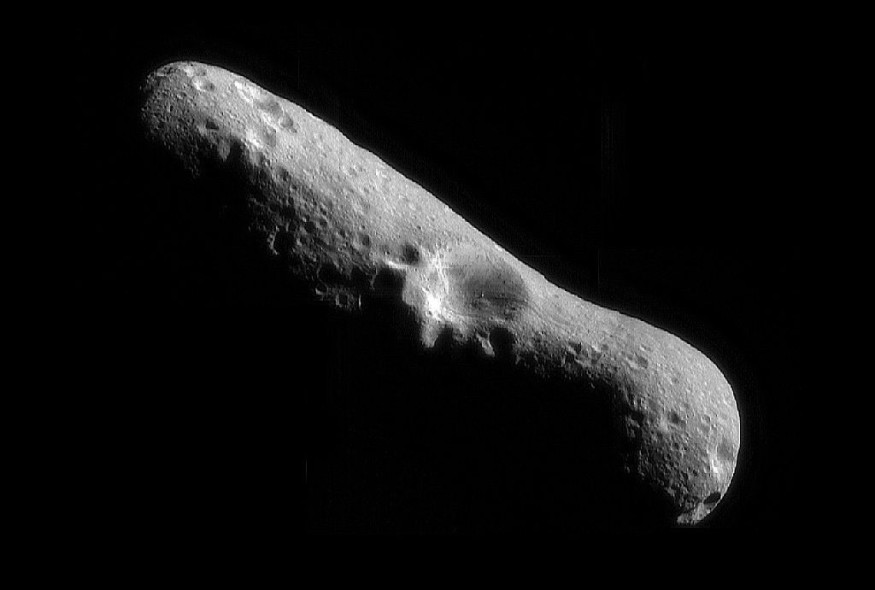
Next month, an asteroid as large as the long Golden Gate Bridge will hurl past the planet. But, while this will be the largest and fastest asteroid to fly near our planet this year, there is no need to worry.
Asteroid 231937 (2001 FO32)

According to the data released by NASA's Jet Propulsion Laboratory, the space rock, officially named 231937 (2001 FO32), is around 0.5 to 1 mile (0.8 to 1.7 kilometers) in diameter and will pass within 1.25 million miles (2 million kilometers) of Earth at 11:03 a.m. EST (1603 GMT) on March 21, near enough and big enough to be listed as 'potentially risky.'
NASA's Center for Near-Earth Object Studies said that an asteroid is classified as 'potentially hazardous' when its orbit intersects with Earth's at a distance of no more than around 4.65 million miles (7.5 million km) and is greater than about 500 feet (140 meters) in diameter (CNEOS).
Read also: Earth vs. Mars: How Similar Are They?
Asteroids
According to NASA's Planetary Defense Coordination Office, tiny asteroids travel between the Earth and the moon many times a month. Their parts join and fall into the Earth's atmosphere nearly regularly (PDCO).
Rocky, airless traces left behind from our solar system's early development around 4.6 billion years ago are asteroids, also considered minor planets.
EarthySky Telescope

According to EarthSky, telescopes in New Mexico that are part of the Lincoln Near-Earth Asteroid Study (LINEAR) program, a U.S. Air Force and NASA funded MIT Lincoln Laboratory program, found the asteroid in March 23, 2001.
Ever since observatories have monitored it. These observations were used by scientists to measure the orbit of the asteroid and determine how close the space rock will come to Earth as it whizzes at about 77,000 mph (124,000 km/h).
The estimated known count of asteroids is 1,063,331.
Much of this ancient space debris can be found within the main asteroid belt orbiting the Sun between Mars and Jupiter. Asteroids vary in scale from Vesta to bodies that are smaller than 33 feet (10 meters) long, the largest at about 329 miles (530 kilometers) in diameter. The total mass of all the combined asteroids is smaller than that of the Earth's Moon.
For the next 100 years, no identified asteroid poses a major danger to Earth. According to NASA's PDCO, the latest greatest identified hazard is an asteroid named (410777) 2009 FD, which has a 1 in 714 (less than 0.2 percent) risk of striking Earth in 2185.
Some of the most known asteroids are:
- 1 Ceres
- 4 Vesta
- 2 Pallas
- 10 Hygiea
- 704 Interamnia
- 52 Europa
- 511 Davida
- 87 Sylvia
- 31 Euphrosyne
- 15 Eunomia
- 451 Patientia
- 624 Hektor
- 3 Juno
- 65 Cybele
- 16 Psyche
- 88 Thisbe
- 19 Fortuna
- 532 Herculina
- 48 Doris
- 45 Eugenia
- 7 Iris
- 423 Diotima
- 13 Egeria
- 41 Daphne
- 94 Aurora
- 107 Camilla
- 24 Themis
- 375 Ursula
- 702 Alauda
- 29 Amphitrite
- 121 Hermione
- 259 Aletheia
- 372 Palma
- 6 Hebe
- 120 Lachesis
- 9 Metis
- 128 Nemesis
According to NASA's PDCO, NASA is researching ways of deflecting asteroids that wind up on a collision course with Earth, such as using a flying satellite's gravity to eventually pull asteroids from their trajectory to a safe distance.
For more space related news, don't forget to follow Nature World News!
© 2025 NatureWorldNews.com All rights reserved. Do not reproduce without permission.





